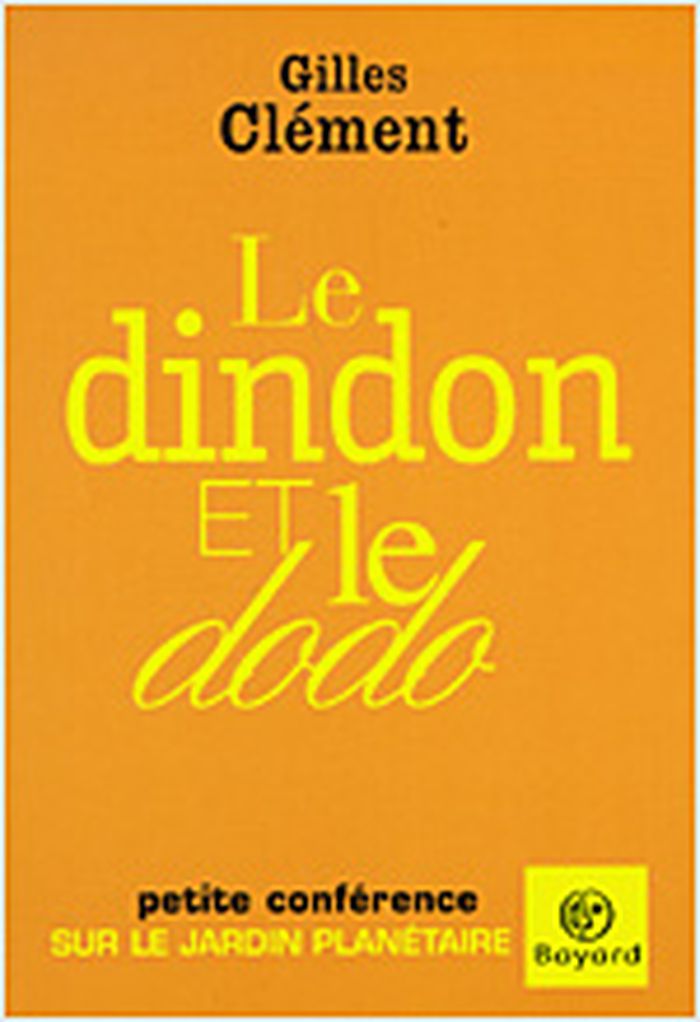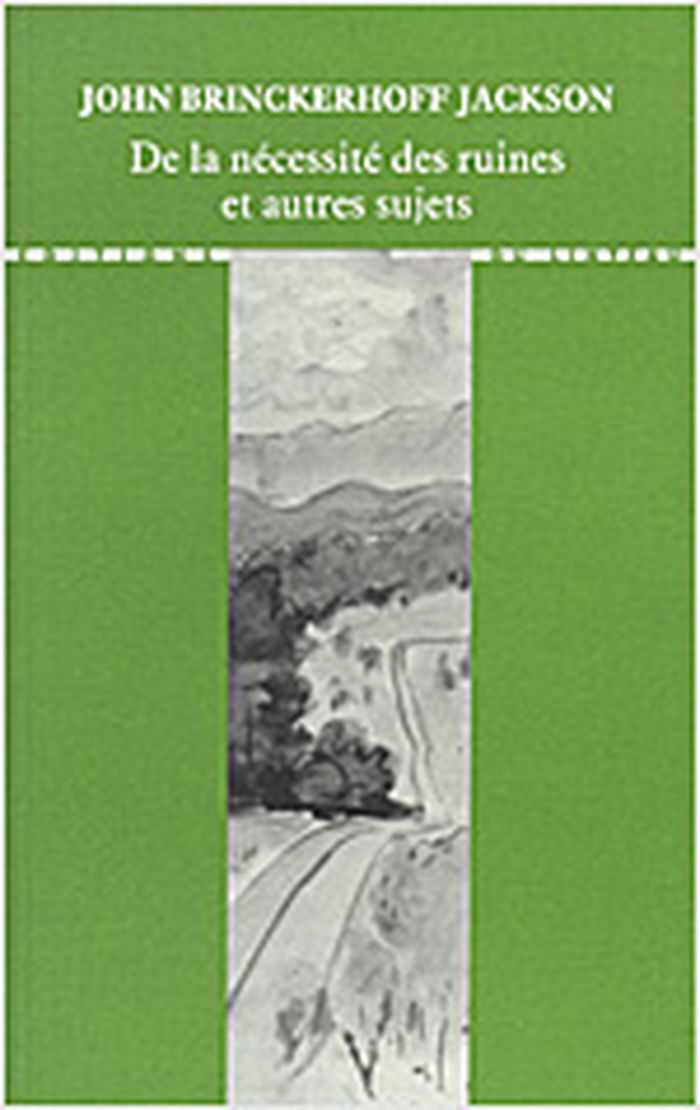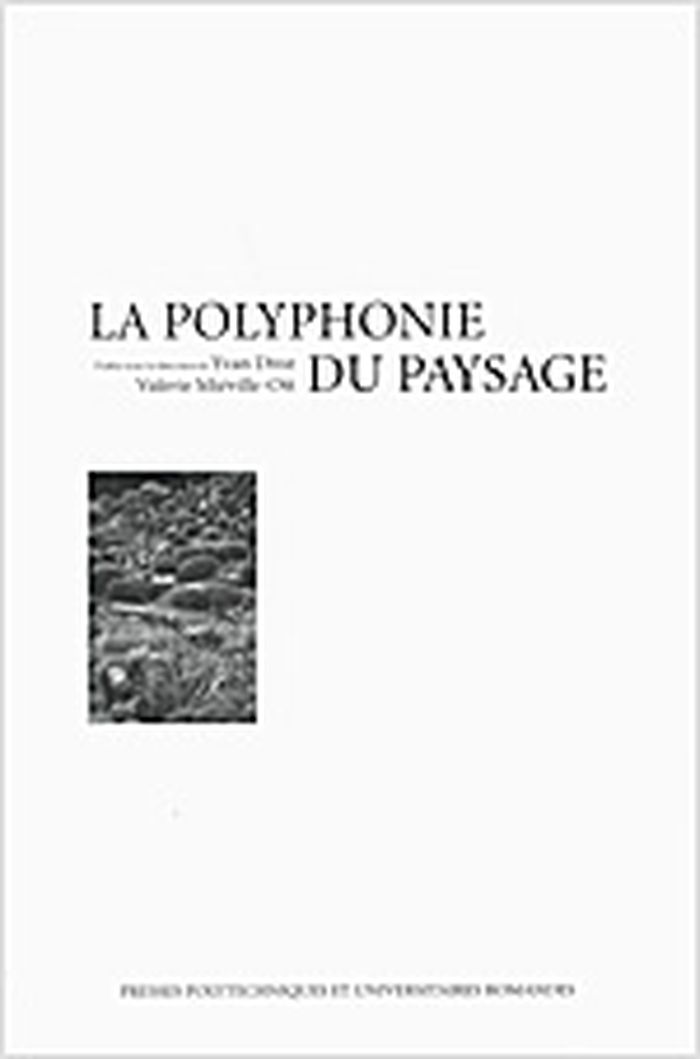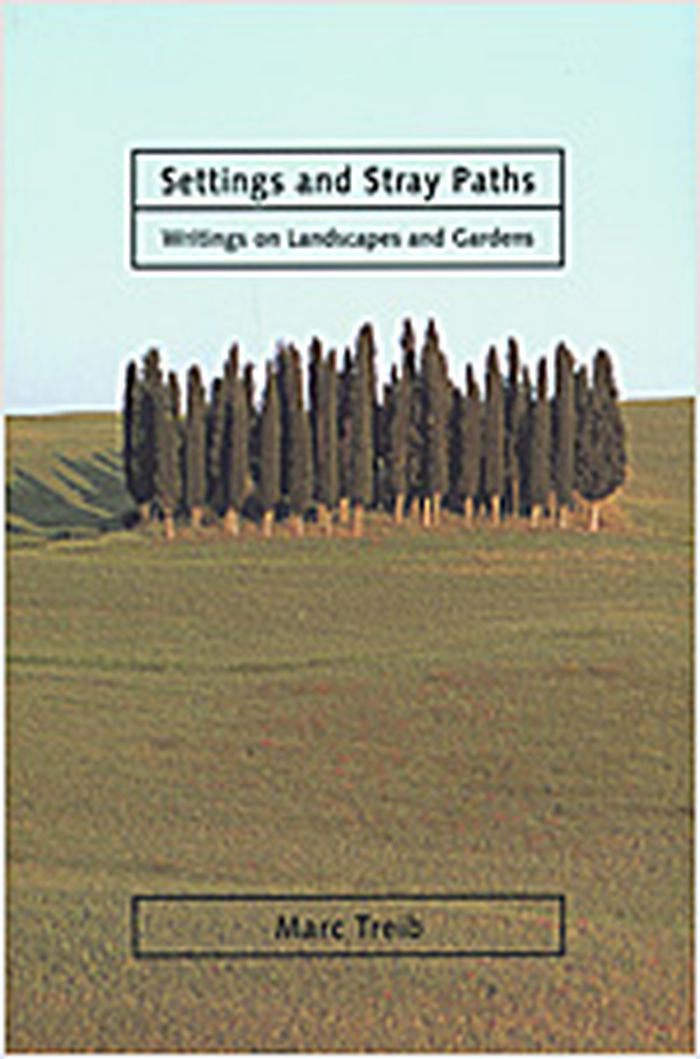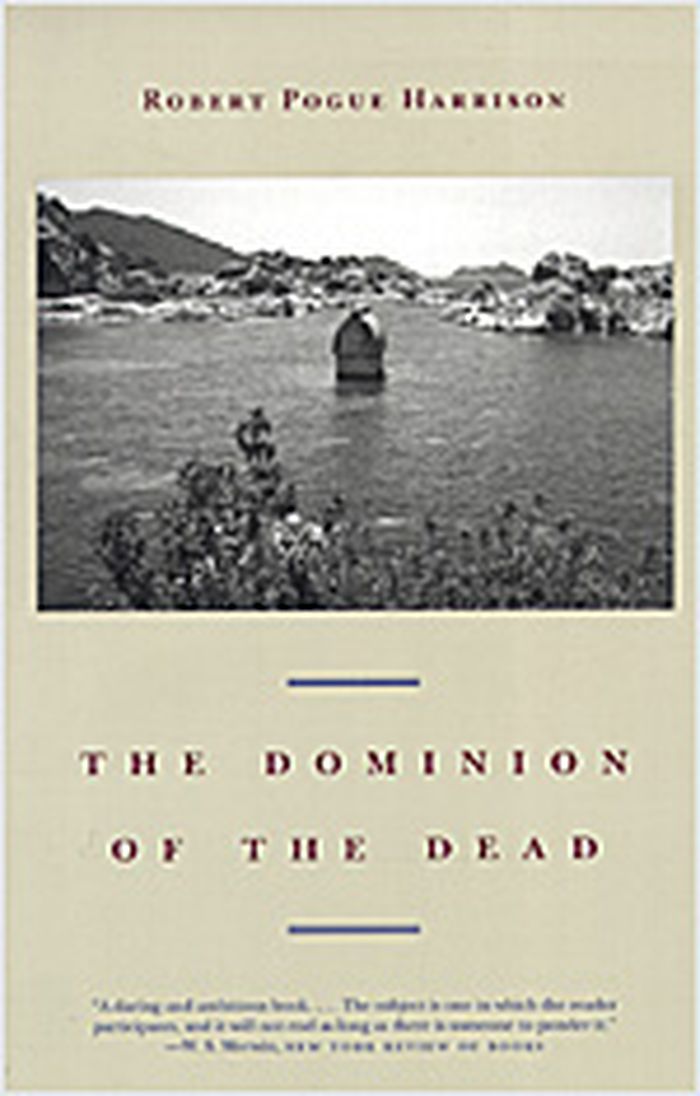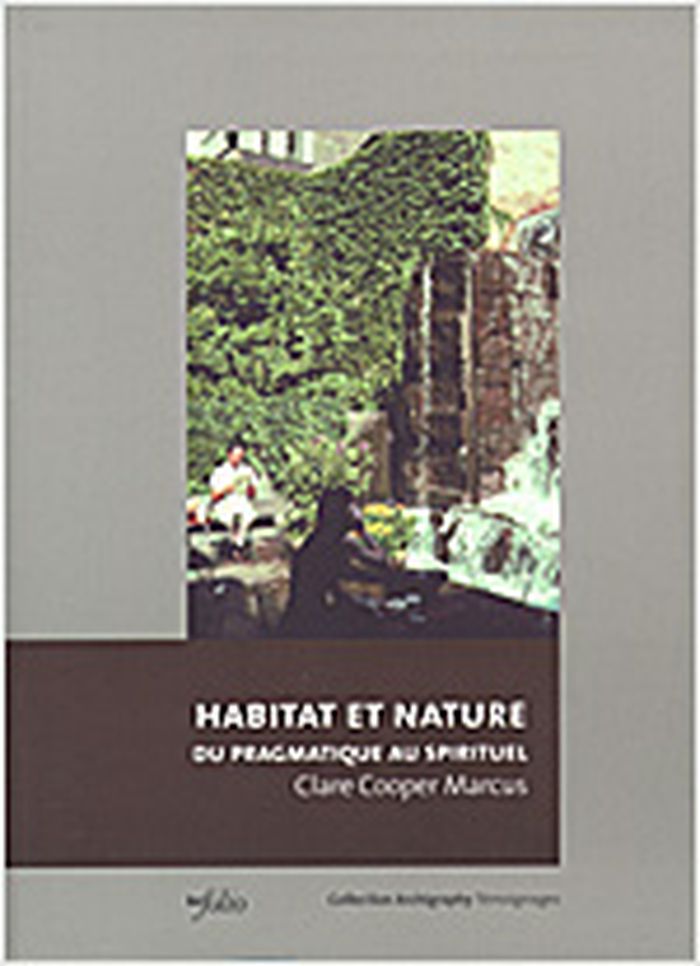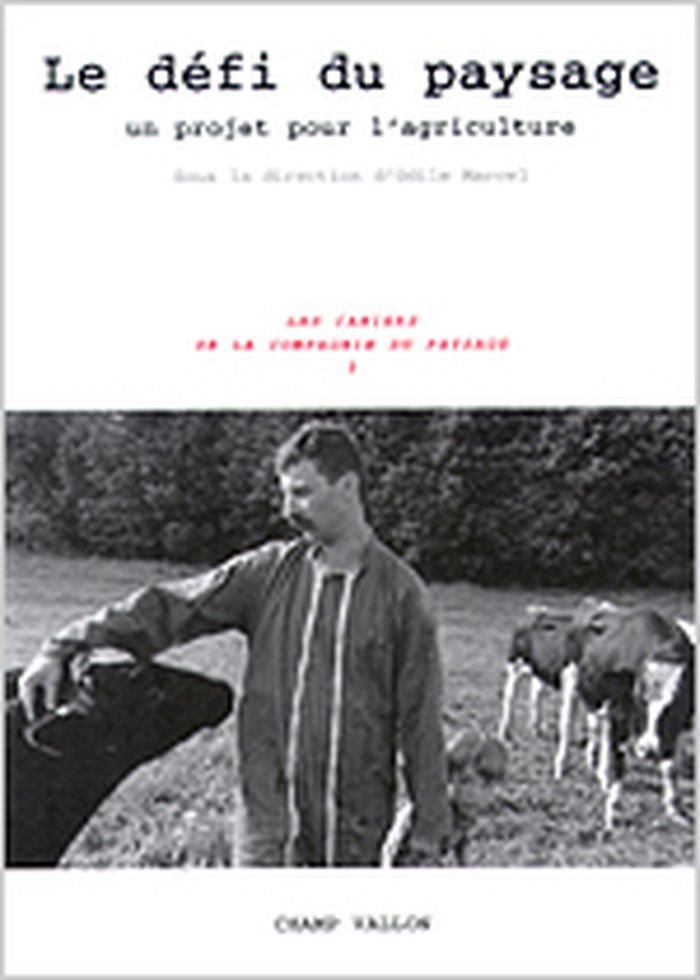$17.50
(available to order)
Summary:
A travers les péripéties d'un jardinier explorateur, Gilles Clément montre l'interaction entre la nature, les animaux et les hommes et constate que cet équilibre est menacé. Néanmoins la nature est pour lui un refuge et elle est comprise non comme un paradis perdu, mais comme un espace habitable et à partager.
Le dindon et le dodo : petite conférence sur le jardin planétaire
Actions:
Price:
$17.50
(available to order)
Summary:
A travers les péripéties d'un jardinier explorateur, Gilles Clément montre l'interaction entre la nature, les animaux et les hommes et constate que cet équilibre est menacé. Néanmoins la nature est pour lui un refuge et elle est comprise non comme un paradis perdu, mais comme un espace habitable et à partager.
Landscape Theory
$42.95
(available to order)
Summary:
Figure majeure et originale des landscape studies anglo-saxonnes, Jackson (1911-1996), fut successivement touriste-reporter un Europe, romancier, cow-boy, officier de renseignement, ranchero, éditeur, et visiting professor dans quelques-unes des plus grandes universités américaines. Les nombreux essais qu'il a consacrés à la lecture des paysages occidentaux et a leurs(...)
De la nécessité des ruines et autres sujets
Actions:
Price:
$42.95
(available to order)
Summary:
Figure majeure et originale des landscape studies anglo-saxonnes, Jackson (1911-1996), fut successivement touriste-reporter un Europe, romancier, cow-boy, officier de renseignement, ranchero, éditeur, et visiting professor dans quelques-unes des plus grandes universités américaines. Les nombreux essais qu'il a consacrés à la lecture des paysages occidentaux et a leurs mutations conjuguent une observation de première main avec une culture historique exceptionnelle et une grande indépendance d'esprit qui s'exprime dans une prose souple et maîtrisée. Dans la Nécessité des Ruines, l'un de ses recueils les plus aboutis, ce précurseur de l'enseignement du paysage livre une sorte de testament : de la balade considérée comme un des beaux-arts.
Landscape Theory
La polyphonie du paysage
$65.00
(available to order)
Summary:
Le paysage est un terme flou, ambivalent, polysémique, qui échappe à une définition claire et objective: qu'est-ce-que le paysage? Comment l'apprécie-t-on? Qui décide de sa gestion? Quels types d'aménagements légitime-t-il? L'ambition de cet ouvrage est double: éclairer et préciser le champ des significations du paysage et en explorer la dimension opératoire et(...)
Landscape Theory
January 2005, Lausanne
La polyphonie du paysage
Actions:
Price:
$65.00
(available to order)
Summary:
Le paysage est un terme flou, ambivalent, polysémique, qui échappe à une définition claire et objective: qu'est-ce-que le paysage? Comment l'apprécie-t-on? Qui décide de sa gestion? Quels types d'aménagements légitime-t-il? L'ambition de cet ouvrage est double: éclairer et préciser le champ des significations du paysage et en explorer la dimension opératoire et politique. Des études de cas enrichissent le débat et proposent des pistes de réflexion autour du paysage en tant qu'objet de négociation collective et territoriale.
Landscape Theory
$56.50
(available to order)
Summary:
Studies of the landscape have ranged from discussions of cultural geography at one end and botany at the other, with quite a mix in between. In this book Marc Treib focuses on the subject of the designed landscape, which he takes to include gardens, cemeteries, plazas, as well as a number of other landscape forms. His writings begin with an investigation of order and its(...)
Settings and stray paths : writing on landscapes and gardens
Actions:
Price:
$56.50
(available to order)
Summary:
Studies of the landscape have ranged from discussions of cultural geography at one end and botany at the other, with quite a mix in between. In this book Marc Treib focuses on the subject of the designed landscape, which he takes to include gardens, cemeteries, plazas, as well as a number of other landscape forms. His writings begin with an investigation of order and its perception: How have humans organized landscapes so that the experience of them could be directed, or even "read," decoded, and understood? His writings include analyses of both historical and contemporary works, with a geographic distribution that treats Asia as well as Europe and North America. Certain essays address the question of content in landscape design, others its meaning; others examine the lives and contributions of major figures in the field, for example, cultural landscape historian John Brinckerhoff Jackson and landscape architect Garrett Eckbo; subjects such as influence also receive the author's attention. As a whole, the essays cover a remarkable range, examining issues that few other writers have attempted to explain in detail. Treib brings a designer's eye to his work, paring observation and formal analysis with a more theorical formulation of the ideas from which or by which landscape architecture is produced. Photographs by the author complement his writings, adding a visual dimension to the provocative ideas outlined in the essays. While all of these essays have appeared in print over a period of some twenty-five years, many have been published in specialist journals or in a foreign language. Settings and Stray paths assembles a vital collection of Marc Treib's writings on landscape architecture, for the first time in a single source book.
Landscape Theory
$25.00
(available to order)
Summary:
The Japanese dry landscape garden has long attracted - and long baffled - viewers from the West. While museums across the United States are replicating these "Zen rock gardens" in their courtyards and miniature versions of the gardens are now office decorations, they remain enigmatic, their philosophical and aesthetic significance obscured. "Reading Zen in the Rocks", the(...)
Reading Zen in the rocks : the Japanese dry landscape garden
Actions:
Price:
$25.00
(available to order)
Summary:
The Japanese dry landscape garden has long attracted - and long baffled - viewers from the West. While museums across the United States are replicating these "Zen rock gardens" in their courtyards and miniature versions of the gardens are now office decorations, they remain enigmatic, their philosophical and aesthetic significance obscured. "Reading Zen in the Rocks", the classic essay on the karesansui garden by French art historian François Berthier, has now been translated by Graham Parkes, giving English-speaking readers a concise, thorough, and beautifully illustrated history of these gardens. Berthier's guided tour of the famous garden of Ryoanji (Temple) in Kyoto leads him into an exposition of the genre, focusing on its Chinese antecedents and affiliations with Taoist ideas and Chinese landscape painting. He traces the roles of Shinto and Zen Buddhism in the evolution of the garden and also considers how manual laborers from the lowest classes in Japan had a hand in creating some of its highest examples. Parkes contributes an equally original and substantive essay which delves into the philosophical importance of rocks and their "language of stone," delineating the difference between Chinese and Japanese rock gardens and their relationship to Buddhism. Together, the two essays compose one of the most comprehensive and elegantly written studies of this haunting garden form. "Reading Zen in the Rocks" is fully illustrated with photographs of all the major gardens discussed, making it a handsome addition to the library of anyone interested in gardening, Eastern philosophy, and the combination of the two that the karesansui so superbly represents.
Landscape Theory
The dominion of the dead
$17.50
(available to order)
Summary:
How do the living maintain relations to the dead? Why do we bury people when they die? And what is at stake when we do? In "The dominion of the dead", Robert Pogue Harrison considers the supreme importance of these questions to Western civilization, exploring the many places where the dead cohabit the world of the living-the graves, images, literature, architecture, and(...)
The dominion of the dead
Actions:
Price:
$17.50
(available to order)
Summary:
How do the living maintain relations to the dead? Why do we bury people when they die? And what is at stake when we do? In "The dominion of the dead", Robert Pogue Harrison considers the supreme importance of these questions to Western civilization, exploring the many places where the dead cohabit the world of the living-the graves, images, literature, architecture, and monuments that house the dead in their afterlife among us. This work devotes particular attention to the practice of burial. Harrison contends that we bury our dead to humanize the lands where we build our present and imagine our future. As long as the dead are interred in graves and tombs, they never truly depart from this world, but remain, if only symbolically, among the living. Spanning a broad range of examples, from the graves of our first human ancestors to the empty tomb of the Gospels to the Vietnam Veterans Memorial, Harrison also considers the authority of predecessors in both modern and premodern societies. Through inspired readings of major writers and thinkers such as Vico, Virgil, Dante, Pater, Nietzsche, Heidegger, and Rilke, he argues that the buried dead form an essential foundation where future generations can retrieve their past, while burial grounds provide an important bedrock where past generations can preserve their legacy for the unborn.
Landscape Theory
$37.95
(available to order)
Summary:
Ce livre rend compte des différentes recherches entreprises par l'auteure sur les terrains de l'habitat et du jardin, entre les années 1970 et 2000. Le sous-titre résume la position de Clare Cooper Marcus qui parcourt intégralement l'éventail de valeurs comprises entre le pragmatique et le spirituel. A la fois ensemble de directives à l'intention des architectes et somme(...)
Habitat et nature : du pragmatique au spirituel
Actions:
Price:
$37.95
(available to order)
Summary:
Ce livre rend compte des différentes recherches entreprises par l'auteure sur les terrains de l'habitat et du jardin, entre les années 1970 et 2000. Le sous-titre résume la position de Clare Cooper Marcus qui parcourt intégralement l'éventail de valeurs comprises entre le pragmatique et le spirituel. A la fois ensemble de directives à l'intention des architectes et somme de considérations sur l'affectivité autour du logement, cet ouvrage est un recueil de ses principaux textes. C'est la première fois que ses textes sont traduits en français. Clare Cooper Marcus étudie l'architecture paysagiste et devient rapidement une des spécialistes de la recherche portant sur les quartiers d'habitation et les espaces verts. Son interprétation des modes de vie et des manières d'habiter est d'inspiration jungienne, comme le rappelle son ouvrage le plus célèbre «House as Mirror of Self». Clare Cooper Marcus figure parmi les fondateurs de la psychologie de l'environnement. Elle enseigne et travaille comme consultante à l'Université de Berkeley.
Landscape Theory
books
$45.95
(available to order)
Summary:
"Je peux traverser un paysage et être sensible à ses charmes. Je peux jouir de la clémence de l'air, de la fraîcheur des prairies, de la diversité et de la gaieté des coloris, du parfum des fleurs. Mais ma disposition d'esprit peut alors connaître un changement soudain. Dès lors je vois le paysage avec un regard d'artiste je commence à en former un tableau. Je suis(...)
Esthétiques du paysage : art et contemplation
Actions:
Price:
$45.95
(available to order)
Summary:
"Je peux traverser un paysage et être sensible à ses charmes. Je peux jouir de la clémence de l'air, de la fraîcheur des prairies, de la diversité et de la gaieté des coloris, du parfum des fleurs. Mais ma disposition d'esprit peut alors connaître un changement soudain. Dès lors je vois le paysage avec un regard d'artiste je commence à en former un tableau. Je suis maintenant entré dans un nouvel univers l'univers non plus des choses vivantes, mais des «formes vivantes»." Lieu par excellence de la contemplation, le paysage naturel comme en témoignent les phrases suggestives de Cassirer devient aussi une catégorie esthétique. Il est à l'horizon de la recherche menée dans cet ouvrage qui constitue un guide circonstancié pour l'expérience esthétique du paysage. Il porte l'attention sur une sensibilité qui, issue de la période préromantique, est aussi un des traits saillants de la spiritualité contemporaine. Raffaele Milani fait défiler les diverses théories et poétiques du paysage, non pas de façon abstraite mais in vivo, dans une confrontation constante avec la tradition philosophique, poétique et littéraire, artistique et architecturale.
books
February 2005, Bologna
Landscape Theory
books
The afterlife of gardens
$62.50
(available to order)
Summary:
Most historical and critical discussions of gardens focus on their design. What happens after the completion of the design, however, is largely ignored, which neglects a much larger part of the site's interest and potential. For gardens, John Dixon Hunt contends, are experienced, often by a succession of visitors at different times and often from different cultures; this(...)
The afterlife of gardens
Actions:
Price:
$62.50
(available to order)
Summary:
Most historical and critical discussions of gardens focus on their design. What happens after the completion of the design, however, is largely ignored, which neglects a much larger part of the site's interest and potential. For gardens, John Dixon Hunt contends, are experienced, often by a succession of visitors at different times and often from different cultures; this experience, though determined by the original design and its subsequent modifications, also augments the site's potentialities, and this "afterlife" of gardens comes to enhance the original moment of creation. One way of exploring the experience of designed landscapes is to adapt literary reception theory to the study of gardens. Hunt argues that such an approach via the reception or experience of gardens enlarges how we should understand their significance and meanings. It is generally assumed that the experience of gardens became a prime ingredient of late eighteenth-century landscapes -- picturesque literature especially highlighted how visitors responded to their surroundings, reading inscriptions and recognizing the significance of carefully placed architectural items or fabriqués. But there is considerable evidence for a much earlier interest in how experience came to constitute an essential aspect of a site beyond the intentions of the original designer or patron. Among other early examples, Hunt examines the book “Hypnerotomachia Polifili” (1499) to show how its protagonist is shown exploring and negotiating a series of strange and baffling landscapes. Through other inquiries -- particularly into the role of movement in such different situations as Versailles, and Chiswick or along modern highways – “The Afterlife of Gardens” provides a fresh approach to the study of designed landscapes that goes beyond their production and into how they exist and are understood by their users. In this ambitious new book the author shows how the complete history of a garden must extend beyond the moment of its design and the aims of the designer to record its subsequent reception. He raises questions about the preservation of historical sites, and provides lessons for the contemporary designer, who may perhaps be more attentive to the life of a work after its design and implementation. This book will interest all who have a professional interest in gardens, as well as the wide general audience for gardens and landscapes of past and present.
books
January 1900, Philadelphia
Landscape Theory
Le défi du paysage
$49.95
(available to order)
Summary:
Initiée il y a dix mille ans à la fin de la dernière glaciation, la domestication des plantes et des animaux permit aux sociétés humaines de développer les civilisations: l'agriculture aménageait la terre, elle l'entretenait pour pouvoir y cultiver les plantes. Les paysages de la terre évoquent cette construction lente, savante et patiente, cette gigantesque entreprise(...)
Le défi du paysage
Actions:
Price:
$49.95
(available to order)
Summary:
Initiée il y a dix mille ans à la fin de la dernière glaciation, la domestication des plantes et des animaux permit aux sociétés humaines de développer les civilisations: l'agriculture aménageait la terre, elle l'entretenait pour pouvoir y cultiver les plantes. Les paysages de la terre évoquent cette construction lente, savante et patiente, cette gigantesque entreprise de composition de l'espace où l'intelligence et le soin des générations ont su donner forme au milieu et l'ont transformé pour faire prospérer les vivants. À l'heure où les sociétés industrielles tirent le bilan environnemental de leurs systèmes de production et dans la perspective annoncée du changement climatique, la question du paysage interroge les équilibres ménagés par l'homme entre lui-même et le milieu, entre le Nord et le Sud, entre le présent et l'avenir. De l'économie à l'esthétique et de l'éthique à la politique, quel souci du meilleur inspirera le lendemain de nos sociétés?
Landscape Theory
